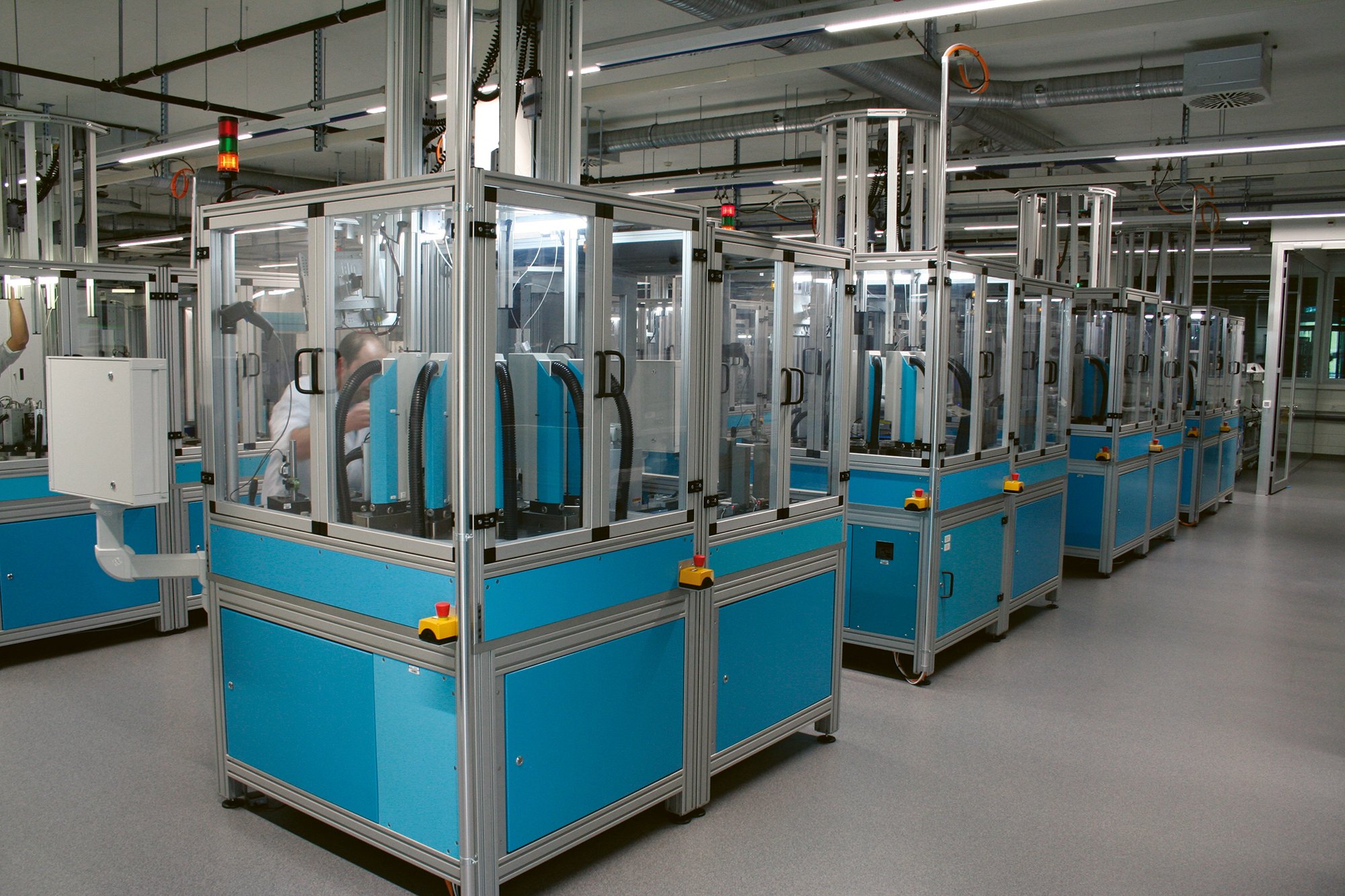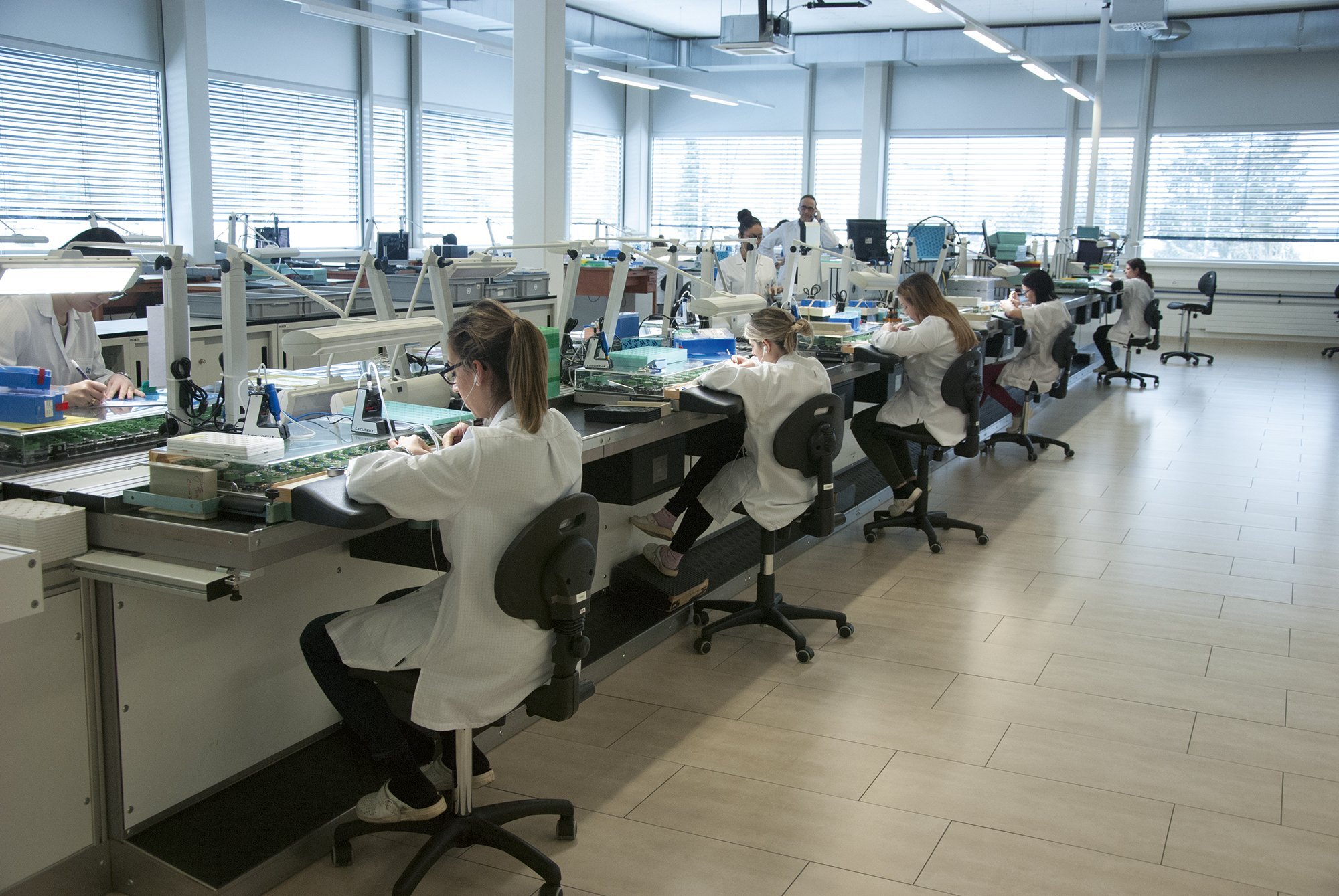little over 20 years ago, in August 2002, Swatch Group’s ETA announced that as of January 1st 2023 it would be reducing deliveries of ébauches, ceasing it completely as of January 1st 2006, and supply only finished movements or, as later became clear, no movements at all – unless by discreet mutual agreement.
In the crosshairs of this decision were the handful of Swiss firms that specialised in assembling mechanical movements from these ébauches, the largest being Sellita. In a worst-case scenario, more than 750 jobs were at risk in a segment – assembling movements from third-party components – that is part of the industrial fabric of watchmaking.
Whatever the outcome, an entire system was thrown into question (on this subject, read “The Coup d’ETA”, published in 2002 by Europa Star).
-

- Symbolic of its position within the industry, the Sellita factories stand sentinel on the road that leads from La Chaux-de-Fonds to Le Locle. Connected by a glass walkway in the shape of a watch, they house departments for subassembly, jewelling, final assembly, casing, logistics and inventory, and are also home to Sellita Engineering which develops machinery and assembly lines.
There followed a long drawn-out battle, interspersed with decisions, themselves the subject of heated debate, by the arbiter, the Swiss competition authority COMCO. We won’t dwell on this here: much was said and written at the time and throughout the twists and turns of the investigation (see our online archives for details).
With little other choice, numerous brands as well as groups did as Nicolas Hayek hoped they would and invested in their own means of production, causing a dramatic shift in the landscape (Hayek famously complained that ETA had become a supermarket where Swatch Group’s competitors came and filled their trolleys).
This new scenario put Sellita at risk of going under. Instead it emerged triumphant from this protracted battle to become a major player in the Swiss Made mechanical movement industry, producing upwards of 1.5 million movements a year.
“Behind the curtains”
This extraordinary turnaround, this dazzling success, was down to one man: Miguel Garcia, sole owner, president and CEO of Sellita since he took over the business in 2003 – shortly after ETA fired its first shot – from Pierre Grandjean, who founded the company in 1950 (Mr Grandjean passed away in 2005).
The son of Spanish immigrants, Miguel Garcia contracted polio at the age of six months and was still a young boy when he came to Switzerland with his parents in 1971 for yet another operation. Having left school at an early age, he joined Sellita in 1987 on the bottom rung as an office assistant, from where he would quickly rise through the ranks.
In 1997 he was promoted to general manager. And in 2003 he bought the company. It’s a journey few make in the watch industry and one that has given him much of his strength of character and sheer determination. Over the next 20 years, Miguel Garcia would set out to transform Sellita and give the company a completely new dimension. He did so discreetly, not shouting from the rooftops but working “behind the curtains”, as he likes to say. “We deliberately keep communication to a minimum.”
“In a way, Swatch Group’s decision rewrote history and cleared a space for us,” he observes. “Since 1970 all we’d done was assemble ébauches. Prior to 2013, we had no manufacturing capacity at all. In 2014 Sellita employed 250 people. We now have a workforce of 600. Taking over from ETA as a supplier of affordable, quality mechanical movements to an entire industry was a gamble. Back then we didn’t produce movements. Now we’re a full-fledged manufacturer and an indispensable component of Swiss industry.”
Twelve months to recreate a movement
Of course, none of this happened overnight. The first step as of 2006 – the cut-off point announced by Swatch Group – was for Sellita to develop and start producing its own movements in just 12 months. These “clones” of ETA movements, because of their identical form factors, could be swapped in for Swatch Group’s workhorse calibres: the likes of the 2824, the 2892 or the famed Valjoux 7750 chronograph. One of the advantages of these generic calibres, in addition to this interchangeability, is that they can be serviced anywhere in the world by any watchmaker with experience of ETA movements.
Miguel Garcia and his teams didn’t stop there. They took these tried-and-tested generic movements and improved them, for example by increasing power reserve from the standard 42 hours to 56 hours, or adding complications to the chronograph movement they had derived from an ETA base.
-

- SW100: Automatic, 3 hands, date, 42-hour power reserve. The SW100 (17.2 mm diameter x 4.8 mm deep) is ideal for small or form watches.
-

- SW210: Hand-wound mechanical movement. Central hours, minutes and seconds. Window date with rapid corrector. Stop second. 4 Hz. 25.60mm x 3.35 mm. 45-hour power reserve.
“At first brands were nervous and wanted interchangeable calibres,” Sébastien Chaulmontet, Sellita’s head of innovation and marketing, explains. “Now we’ve gone beyond generic movements. We produce our own movements which don’t follow standard dimensions and have developed our offering for the high end of the market. Take the SW200 for example, which is our hero product and the equivalent of the ETA 2824. It’s been completely reworked and the power reserve upgraded. All our Sellita movements have undergone similar upgrades in terms of power reserve as well as robustness and reliability. We now offer 11 movement families, from a ladies’ three-hander to our Manufacture AMT [Advanced Mechanical Technology] chronograph.” From assembler to manufacturer
From having no production capacity whatsoever in 2013, Sellita has achieved a high level of vertical integration, such that it now produces some of its own regulating organs: escapements, balance wheels and even balance springs. It works with a network of over a hundred suppliers, mostly in the Arc Jurassien, at the same time putting together a string of affiliate companies. One of these is Gurofa in Glashütte, Germany, where 120 people work exclusively for Sellita, producing brass mainplates and bridges. Helios is another. A specialist in micro-turning, it employs 130 people in a factory that recently opened in Court, in the Bernese Jura. Plus Technicor in Les Breuleux for decoration and electroplating; Atiles, which provides watch design and private label services; and the aforementioned AMT, which develops advanced technological solutions for high-end movements.
-

- SW500: The SW500, an automatic integrated chronograph with day and date, is famed for its robustness. Stop second mechanism, 62-hour power reserve. Central 60-second counter, 30-minute counter at 12 o’clock, 12-hour counter at 6 o’clock, small seconds at 9 o’clock.
-

- SW1000: High-end extra-thin automatic (20 mm diameter x 3.9 mm deep). Higher price segment for equipping ladies’ and form watches.46-hour power reserve. Central hours and minutes. Quick-set date. Stop seconds mechanism.
Indeed, AMT is characteristic of Sellita’s move upmarket. It develops specific products on an existing base movement with, it has to be said, a minimum of 50,000 units per product, which becomes the customer’s property, and provides high-level technical solutions. As well as working to brands’ specifications, AMT develops original products which it then offers to selected customers.
That said, Sellita also works with smaller brands and can fulfil orders for as few as 50 pieces but “only for companies. We don’t sell to individuals.”
“We’re about action, not words!” says Miguel Garcia. “We deliver a very broad range of products. In a way, we feel we have a duty towards the industry.”












































